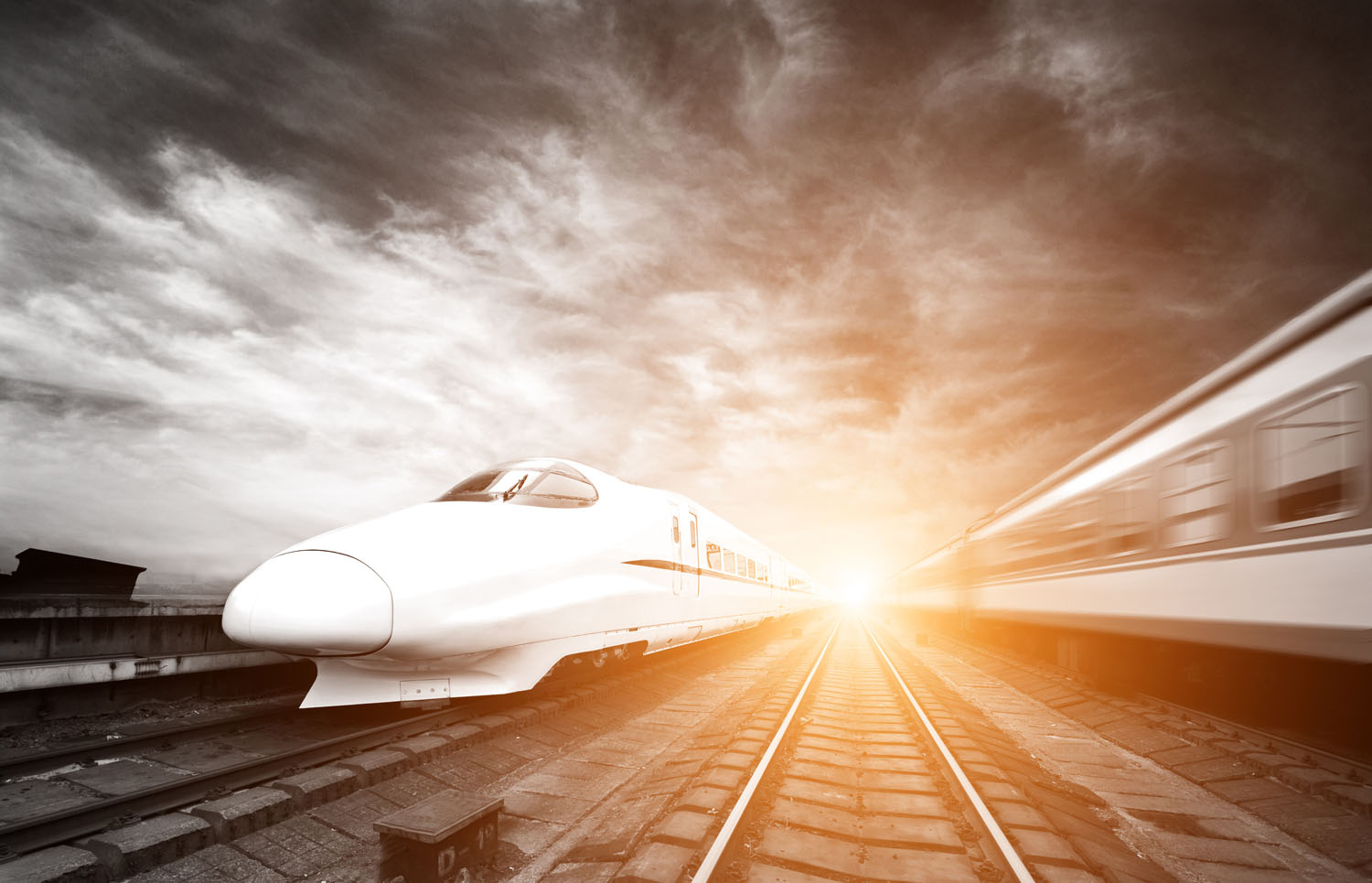

HIGH-SPEED TRAINS IN JAPAN, OR THE SHINKANSEN RAILWAY
The fastest train in the world – how shinkansen works
603 km/h – Japan has been bravely defending the railway speed record since 2015. Even though the Japanese high-speed train goes slightly slower that its Chinese competition on a daily basis, shinkansen permits travelling 500 km (transfer from Tokyo to Kyoto) in just a little above 2 hours. It is only logical to ask the following question about the speed of the machine: does it fly? Oh, but it does! The spectacular speed attainable by Japanese trains is possible due to an advanced technology of magnetic cushions that lift the machine up to even 10 cm. The interactions between magnets and electromagnets on the track and in the vehicles create a strong magnetic field that makes the train practically lose contact with the ground. This permits minimising the speed losses arising from the friction between the wheels and the rails and lets the machine float.
High-speed train in Japan
The world’s fastest trains look slightly different than other modern structures. The Japanese machine resembles an elongated bullet, which is why it its also called ‘bullet train.’ All the seats in high-speed vehicles generally face the direction of travel. So you do not have to worry about spending your journey face to face with a stranger – unless you request this. If you travel with your family or in a bigger group, you can turn the seats to make them face each other.
Most seats on shinkansen usually must be booked in advance. Before the journey, you may approach the railway station service with your ticket and ask for a free reservation of the seat of your choice. Check the route first to see which side of the train will offer more exciting views.
The price of comfort – how much is a shinkansen fare?
Shinkansen, or literally the ‘new trunk line,’ was created in 1964 to provide quick connections between Tokyo and Osaka during the Olympics. Today, the railway functions on dozens of different routes, which permits reduce the transfer time fourfold. For instance, a journey from Tokyo to Kyoto, which may take even 8 hours on a standard train, can be done in 2 hours 15 minutes due to the magnetic speed of shinkansen. Still, the speed and comfort of modern trains is costly. A ticket from Tokyo to the former capital city is currently about 14,000 yens, which is approximately 470 zloty. So if you are thinking about a trip to Japan, plan your route carefully. If your itinerary requires more railway transfers, apply for a special ticket for foreign tourists. The Japan Rail Pass means unlimited railway travel in a selected period – 7, 14 or 21 days. The price of a biweekly pass for an adult is about 1,500 zloty.
Trains in Japan – punctuality
Aside from bullet trains, Japan has traditional regional trains (kakueki-teisha), rapid trains (kaisoku) and express trains (kyuukou). Regardless of the type of connection or the route chosen by the passengers, all Japanese trains follow the same punctuality and customer service standards. Pursuant to the internal regulation of Japan Railways, a 5-minute delay is allowed only if there is a stronger than level 6 earthquake according to the Richter scale. In all other cases, the passengers are reimbursed for the tickets, and receive a certificate excusing their absence or tardiness at work together with an apology letter. As a comparison, the average train delay in Poland is almost 10 minutes (data from the 3rd quarter of 2017).
Travel etiquette
Polish Railways could learn from Japanese Railways not only punctuality but also general travel etiquette – which applies to the carrier and the passengers in equal measure. Japanese trains are clean, tidy and offer fresh air.
The way of checking the tickets is also much more passenger-friendly. Since it is impossible to enter the platform without first presenting (or scanning) a valid ticket, the check on the train may be limited to verification of whether the reserved seats were taken on the right station. Ticket inspectors bow respectfully to the travellers and walk around the carriages to check the seat occupancy. There are usually no problems in this respect as the Japanese have no difficulty finding their seats. If you know the seat number all you need to do is stand in the right zone of the platform and queue up before the entrance. Trains always stop in the same places so everyone can easily get to the right compartment. Passengers also do not have to worry about being tread on or pushed before embarking. Even before the train arrives, neat queues form in each zone. The embarking process is monitored by the railways service, which hurries any stalling passengers.
All compartments of the train are covered by a no-phone-call ban for the convenience of travellers. You can only make a call in specially separated sections. Watching the drivers during the journey might be an interesting experience. In order not to feel sleepy or lose concentration, they must make certain gestures which may be seen by those unaware as weird physical exercises.
Japanese trains
Despite the high costs of travel, the incredible quality of the shinkansen high-speed trains is worth the price. It is not only the most practical and the fastest form of transport but also – or maybe primarily – an incredible cultural experience. So what’s your decision – will you take the train flight?























